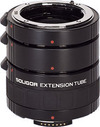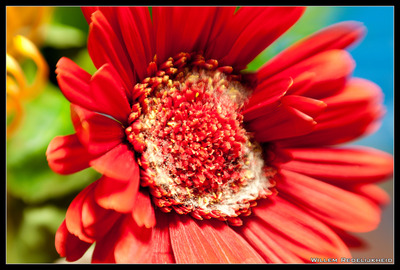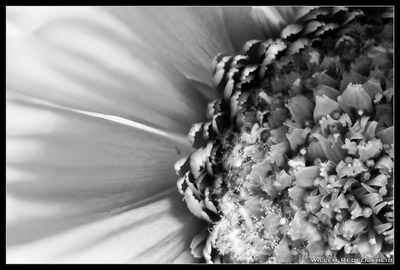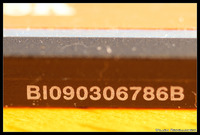Extension Tubes and Macro Photography
 Sunday, November 14, 2010 at 12:37
Sunday, November 14, 2010 at 12:37  Soligor Extension TubesSince I have no real specialty (yet) in the field of photography I do own a macro lens (a Sigma 105mm f/2.8 EX DG). Playing around in the macro field I find that the 1:1 representation of the subject isn't always what you want. Sometimes you need, or want more magnification. There are several ways of achieving a higher magnification ratio. One of them is using so-called extension tubes.
Soligor Extension TubesSince I have no real specialty (yet) in the field of photography I do own a macro lens (a Sigma 105mm f/2.8 EX DG). Playing around in the macro field I find that the 1:1 representation of the subject isn't always what you want. Sometimes you need, or want more magnification. There are several ways of achieving a higher magnification ratio. One of them is using so-called extension tubes.
 Taken with a Lensbaby Composer and a 36mm Extension TubeThese extension tubes are placed between the camera and the lens and therefor increase the space between the lens and your sensor. This results in a significant smaller focusing distance. Another advantage is that the extension tubes don't hold any glass or optics, so no degradation of the light traveling through an extension tube. You will miss some light with the use of these tubes, but that can / will be compensated by longer exposure.
Taken with a Lensbaby Composer and a 36mm Extension TubeThese extension tubes are placed between the camera and the lens and therefor increase the space between the lens and your sensor. This results in a significant smaller focusing distance. Another advantage is that the extension tubes don't hold any glass or optics, so no degradation of the light traveling through an extension tube. You will miss some light with the use of these tubes, but that can / will be compensated by longer exposure.
There are disadvantages as well; These tubes often remove the auto-focusing capabilities of the lens. Another disadvantage might be that these tubes prevent you from adjusting the aperture through the camera, which is basically a showstopper with the new Nikon G Lenses (no aperture ring). The depth of field will be much, much smaller. Whether this is good or bad depends on the subject, I guess. Finally, you will also not be able to focus at infinity with these tubes.
Thankfully, most of these disadvantages disappear with macro photography, since auto-focus is something a barely use with my Sigma 105mm macro lens, since it hunts like crazy trying to focus. Manual focus is much quicker and easier in this case.
Getting your hands on extension tubes isn't that big a deal. There are many types and brands available, but not many of them have the actual disadvantages described earlier. Nikon offers extension tubes [1, 2], but these lack auto-focus coupling (for the D lenses), and the preservation of EXIF information regarding the lens. Something you can live without, but why settle for Nikon's with limitations when you can get a cheaper alternative with all the feature you need?
The extension tubes I have are from Soligor. They make a set of extension tubes (12, 20 and 36mm) which has the electrical contacts for both EXIF information AND AF-S focusing (!!!!). For the older D lenses it also has the screw auto focus mechanism. The latter works, but not very fast....
The effortful mechanic and electronic construction of the SOLIGOR extension tubes allows the transmission of all automatic features, however the auto focus function may be limited, due to lost of light and little depth of field caused by laws of optical physics.
The price on their website is relatively high. I got mine for €145,00 @ Fotokonijnenberg. Quite cheap compared to the Nikon tubes.
 Taken with a Nikon 50mm f/1.8D and extension tubes.
Taken with a Nikon 50mm f/1.8D and extension tubes.
So, there's no real need to invest large amounts of money to get some extraordinary magnification with relatively cheap lenses. Just get a set of extension tubes and you're good to go. And if you're a manual kinda guy, you can get even cheaper extension tubes. The ones without electronics contacts and the auto focus screw mechanism.
Finally, two photos for comparison (I apologize for the crappy light conditions). The first (left) photo has been taken with a Nikon D300 and a Sigma 105mm @ f/2.8. The second (right) photo uses the same camera and lens @ f/2.8, but with the three extension tubes, adding 68mm. Both photo have been taken @ the shortest focussing distance.
 Soligor,
Soligor,  extension tubes,
extension tubes,  macro in
macro in  Photography,
Photography,  Review
Review 




Reader Comments (1)
Macrophotography is really awesome! Even tiny things look so huge! Fantastic!